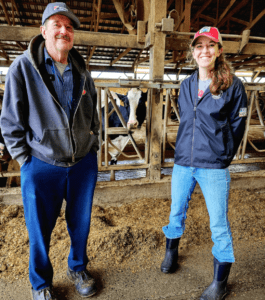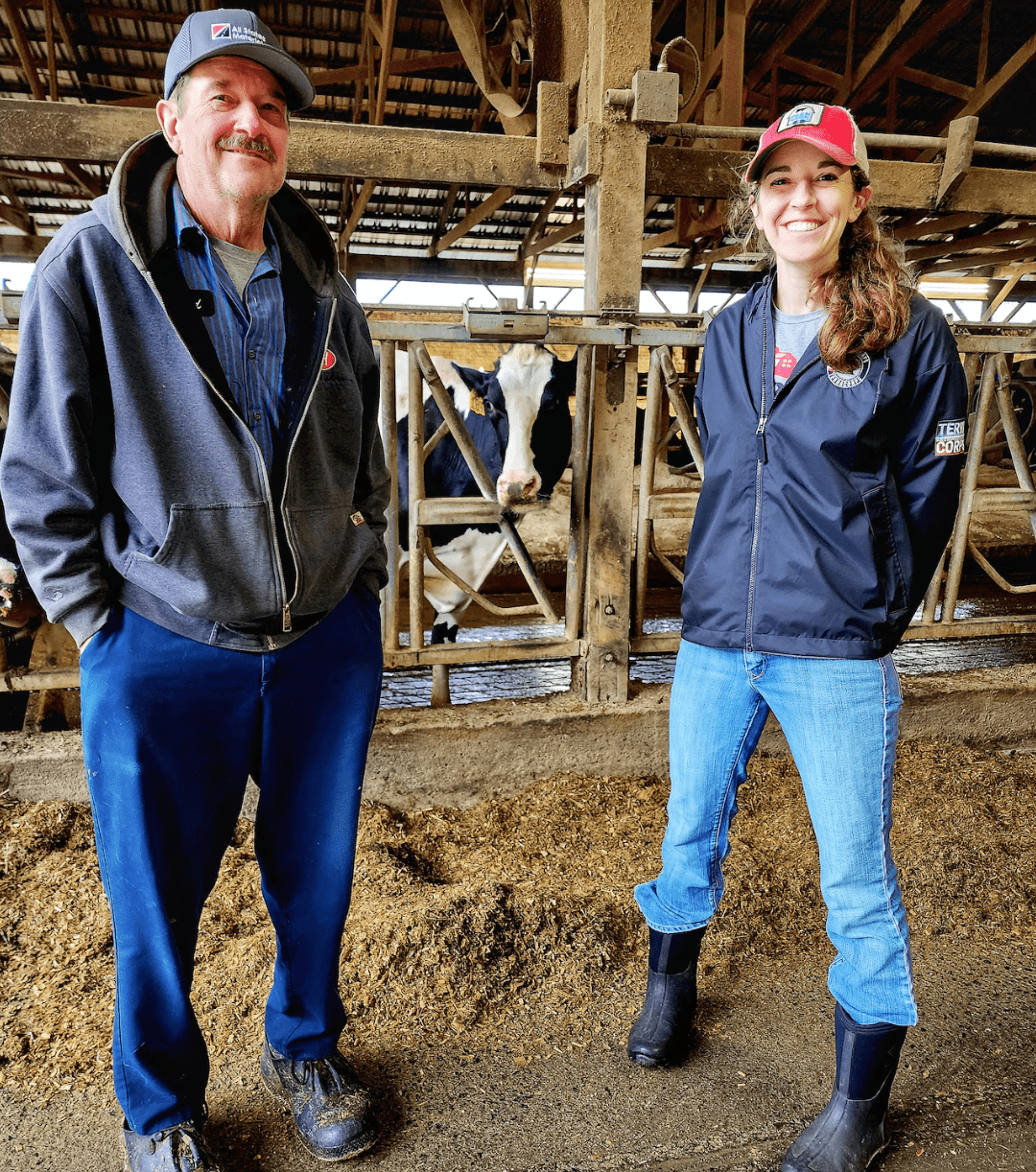By Staasi Heropoulos | Special to The Republican
HADLEY — In the barns at Barstow’s Longview Farm, workers will be drawing the curtains and turning on fans this summer to cool the cows and lower humidity. Cattle can’t endure the scorching summer heat many are blaming on climate change.
 “When animals are stressed by the heat, they tend to be less healthy, they’re more susceptible to disease and infection,” said Denise Barstow Manz. “Every dairy farmer in the world knows that a comfortable dairy cow is going to give you more and better quality milk.”
“When animals are stressed by the heat, they tend to be less healthy, they’re more susceptible to disease and infection,” said Denise Barstow Manz. “Every dairy farmer in the world knows that a comfortable dairy cow is going to give you more and better quality milk.”
That heat is only predicted to increase in the future. Globally, 2023 was the warmest year recorded since officials began tracking the weather in 1850, according to the National Centers for Environmental Information. The average temperature last year was 2 degrees Fahrenheit higher than the average across the 20th century.
Last summer, there were 10 days where temperatures climbed past 90 degrees in Western Massachusetts, according to Joe Dellicarpini, a meteorologist with the National Weather Service in Boston. While that isn’t the greatest number of 90-plus days the region has seen in one year, weather dysfunction is driving heat further into the fall. There were three days above 90 degrees in September.
From rising temperatures to more intense storms, Valley farmers are feeling the effects of climate change and adapting.
The big story
Heat might have made headlines last year, but there also was deep concern over rain.
“It was a really wet summer, and that was the big story,” said Dellicarpini. “We had a very persistent weather pattern, which brought a lot of tropical air into much of the Northeast. The number of days we get a half inch or more of rainfall has gone steadily up.”
Many farms across the region were hit by heavy rain last summer and flooding from the Connecticut River.
Barstow’s Longview Farm grows corn, hay, sorghum and alfalfa to feed its 600 head of cattle. Flooding and rain wiped out half of the harvest last year, so the Hadley dairy farm had to buy feed.
“It cost us around eight times more to [purchase] our forage crop than to grow it in a good season,” said Barstow Manz.
Wally Czajkowski owns Plainville Vegetable Farm in Hadley, and the weather was also a challenge for him last year. Moderate temperatures are coming earlier than expected, and the head start hurts him.
“It’ll be much warmer than normal, then you’ll get a couple of nights that are really cool, so any plants that have jumped the gun get damaged by the cold,” he said. “We lost a lot of crops. Everybody lost crops last year.”
While rain put a damper on the growing season in Western Massachusetts, drought and wildfires plagued Canada. Smoke from those blazes blew into southern New England, blocking the sun and stunting the growth of corn used to feed cattle at Cook Farm in Hadley.
“Blocking the sun’s rays affected photosynthesis,” said Gordon Cook, the farm’s owner. “It took away some of the maturation of our corn plants. At that point, the crop we grow is younger and has less fiber, giving the cows less protein and energy.”
Kyle Bostrom owns Bostrom Farm in Greenfield, where wet weather drenched and ruined grass he uses to feed his beef cattle. While his squash and pumpkins survived, he lost his peppers.
Southern hospitality
Bostrom is dealing with the rain and heat by changing the way he farms. He’s purchasing heat-resistant grass seeds that grow in Virginia, and he’s cutting the grass higher so the sun won’t fry it. The grass also serves as a sponge, sopping up heavy rainfall before it can pool in the soil, rotting his crops and creating mud that makes it impossible to work in the fields.
On the other end of the spectrum, Bostrom is planting forage that is more resistant to cold weather in the spring and fall.
“Hopefully, we can start grazing earlier in April right through early December, so that’ll increase our grazing time,” he said. “You have to create a larger root mass to increase your organic matter and absorb water. It also creates healthier root structure and improves soil health.”
State aid helpful
Last fall, Gov. Maura Healey’s administration announced it was delivering $1.75 million from the Climate Smart Agriculture Program to farmers grappling with climate change. Plainville Farm received nearly $12,000 to purchase new multitasking machinery.
“It will till the soil, put down fertilizer, lay drip irrigation and make a little raised bed,” said Czajkowski. “If we get a lot a lot of rain, the bed will keep the plants up out of the water. If we get an extended period of drought, we can irrigate the plants without using too much water,” he said.
Reducing the number of times the tractor travels up and down the fields also reduces harmful emissions, said Czajkowski.
Several farmers are using their grants to purchase no-till drills, which pierce the soil when they plant seeds. This avoids drying out the dirt by digging it up.
“When you till the soil, you disrupt its ecosystem, and kill the good fungi and bugs that are alive there,” Barstow Manz said. “When they die and decompose, they release carbon into the atmosphere. The no-till system is a good way to sequester carbon and prevent erosion.”
Beyond funding new equipment, the Healey administration also delivered a $20 million grant late last year to help farmers that lost crops because of extreme weather. “If it hadn’t been for that, a lot of us wouldn’t have been able to pay our bills,” said Czajkowski.
Other tactics for new age
Farmers are using many tactics to battle climate change. Some are extracting energy from rotting food and cow manure, using part of it to power farm operations and selling the rest to the electric company. The Barstows are also giving their cows higher quality feed, which is easier to digest.
“When cows have high quality feed, their stomach does less work. There’s fewer bubbles and belches coming from the animal, which means we’re reducing methane emissions,” said Barstow Manz. “Higher quality feed works hand in hand with having high quality milk.”
The changing climate is forcing governments and farmers to cultivate new ways of protecting crops and the environment. Bostrom said farmers have always dealt with unpredictable weather, which is becoming increasingly extreme.
“I don’t think it’s a matter of being concerned [about climate change],” he said. “It’s a matter of adjusting, because the years ahead are probably all going to be like this.”
